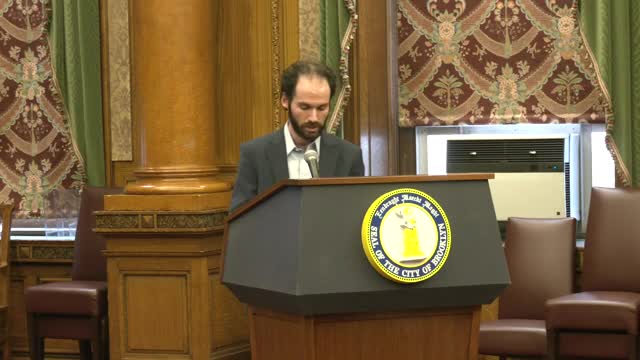New York City proposes bold plan for affordable housing expansion
May 07, 2024 | Kings County - Brooklyn Borough, New York

This article was created by AI summarizing key points discussed. AI makes mistakes, so for full details and context, please refer to the video of the full meeting. Please report any errors so we can fix them. Report an error »

In a recent government meeting, officials unveiled a new housing initiative aimed at addressing New York City's ongoing affordability crisis. The proposal, known as the Universal Affordability Preference (UAP), seeks to allow apartment buildings in high-density districts to increase their size by approximately 20% if the additional space is dedicated to permanently affordable or supportive housing.
The UAP is designed to encourage the development of affordable housing across the city, rather than concentrating it in select neighborhoods. Unlike existing programs, such as the Voluntary Inclusionary Housing (VIH), which has a higher Area Median Income (AMI) threshold of 80%, the UAP aims to lower this requirement to an average of 60% AMI. This adjustment is expected to better serve lower-income New Yorkers, with the potential for income averaging that allows for a mix of units at varying income levels.
The initiative builds on existing regulations that permit larger buildings for affordable senior housing, expanding this benefit to all types of affordable housing. Officials highlighted that if the UAP had been in place since 2014, it could have resulted in the creation of an additional 20,000 income-restricted affordable homes, potentially housing around 50,000 residents.
While the UAP would replace the VIH in mapped areas, the Mandatory Inclusionary Housing (MIH) program will remain in effect, ensuring that a percentage of new developments continue to include income-restricted affordable housing. The meeting also discussed improvements to the MIH program, including the potential for a standalone deep affordability option and adjustments to Floor Area Ratios (FAR) to align with UAP standards.
Overall, the UAP represents a significant shift in the city's approach to affordable housing, aiming to create a more inclusive and equitable housing landscape for all New Yorkers.
The UAP is designed to encourage the development of affordable housing across the city, rather than concentrating it in select neighborhoods. Unlike existing programs, such as the Voluntary Inclusionary Housing (VIH), which has a higher Area Median Income (AMI) threshold of 80%, the UAP aims to lower this requirement to an average of 60% AMI. This adjustment is expected to better serve lower-income New Yorkers, with the potential for income averaging that allows for a mix of units at varying income levels.
The initiative builds on existing regulations that permit larger buildings for affordable senior housing, expanding this benefit to all types of affordable housing. Officials highlighted that if the UAP had been in place since 2014, it could have resulted in the creation of an additional 20,000 income-restricted affordable homes, potentially housing around 50,000 residents.
While the UAP would replace the VIH in mapped areas, the Mandatory Inclusionary Housing (MIH) program will remain in effect, ensuring that a percentage of new developments continue to include income-restricted affordable housing. The meeting also discussed improvements to the MIH program, including the potential for a standalone deep affordability option and adjustments to Floor Area Ratios (FAR) to align with UAP standards.
Overall, the UAP represents a significant shift in the city's approach to affordable housing, aiming to create a more inclusive and equitable housing landscape for all New Yorkers.
View full meeting
This article is based on a recent meeting—watch the full video and explore the complete transcript for deeper insights into the discussion.
View full meeting
